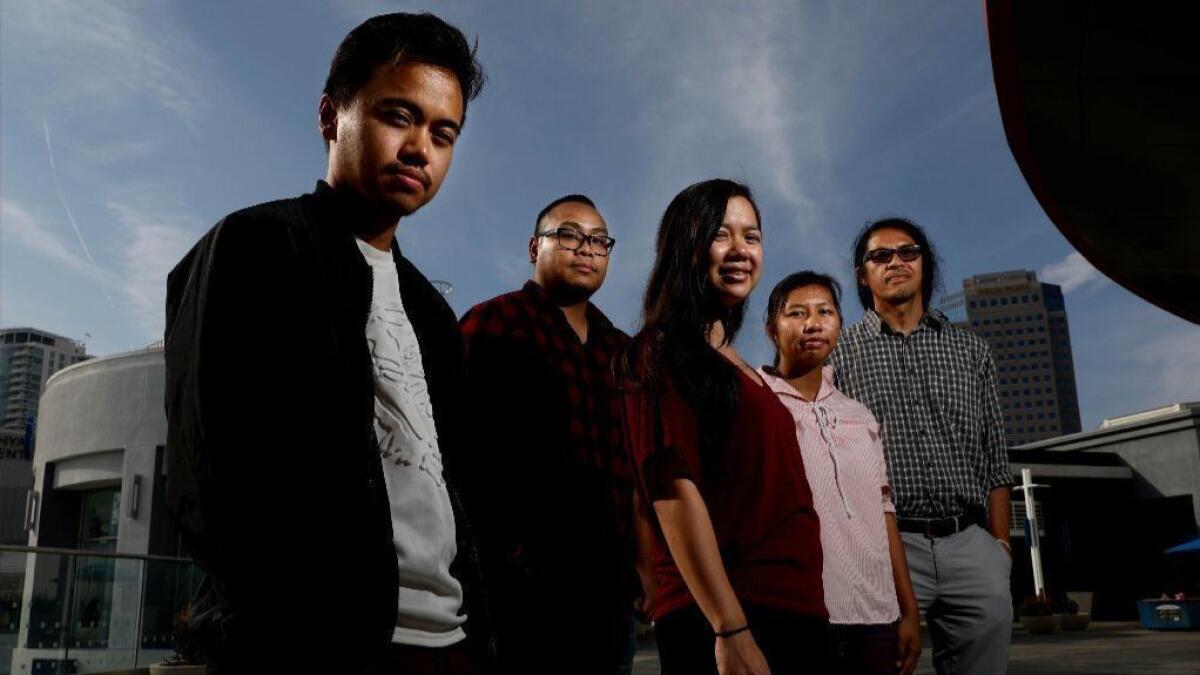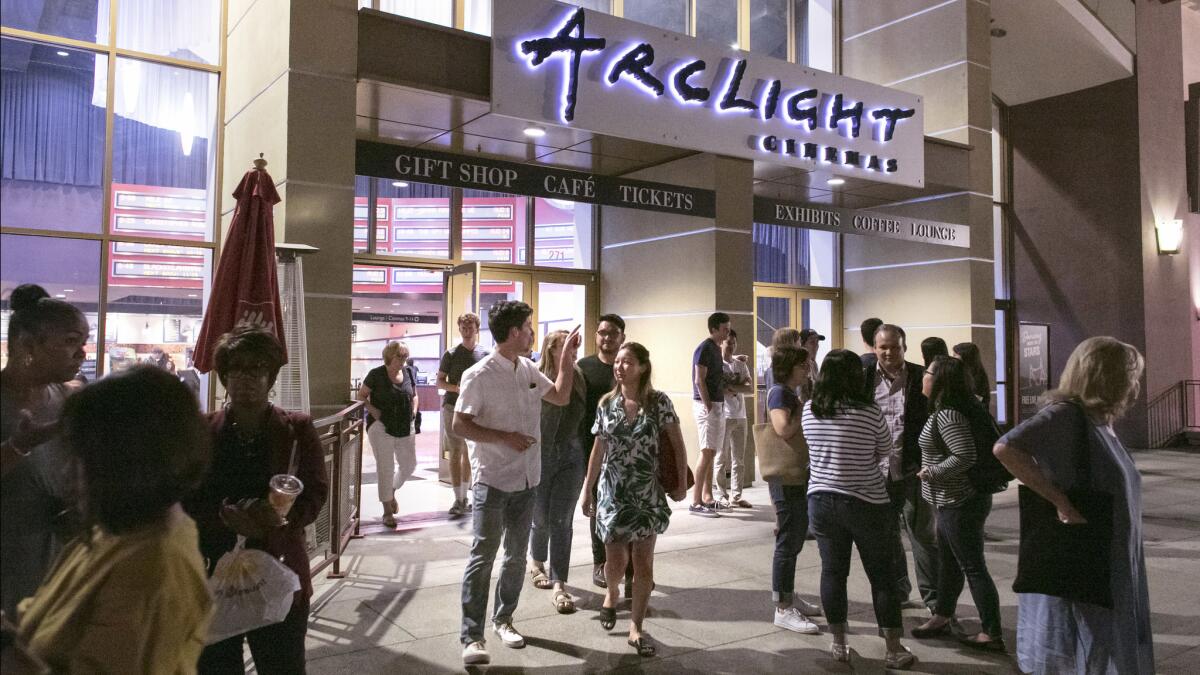Commentary: ‘Crazy Rich Asians’ didn’t tell all of our stories, but Asian Americans found a way to relate
The news that “Crazy Rich Asians” had become the most successful romantic comedy in nearly a decade inspired, I confess, not just happiness but relief.
For months, my group chats had hummed with anticipation about the first blockbuster in a while to feature an Asian cast and story line.
We were excited but anxious. Some of us issued carefully worded statements of support on Facebook that almost read like news releases. Others spent thousands of dollars to buy out theaters and organized viewing parties.
I was relieved when the film got good reviews, when my Asian American friends and acquaintances didn’t hate it, and when its success helped spur the green lighting of more than a dozen other projects with Asian American directors, actors or story lines. The film, as of today, has been the No. 1 film in America for three weeks, raking in more than $120 million since its mid-August release.
And on some level, I think I was relieved because I thought, however bizarrely, that my own social value and that of the entire Asian American community hinged upon the box-office receipts of this film.
And that’s how complicated it is to be Asian American in 2018.
Whenever a new portrayal of Asian Americans comes out — which is not often — many of us hold our breath. Will it be racist? Will it be good? Authentic? Corny?
Because Hollywood has made so few of them, Asian American movies and TV shows face an intense scrutiny that is impossible to pass, said Nancy Wang Yuen, a sociology professor at Biola University who studies race and ethnicity in film. Audiences who have grown up with stereotyped and accented portrayals are frustrated and impatient for progress.
“We’re all kind of traumatized,” Yuen said. “It’s a burden that no film should ever have to endure.”
I’ve seen a wide assortment of reactions to “Crazy Rich Asians.” The film, according to some, is a historic moment for our visibility in Hollywood that could forever change the industry. Or it is another in a long line of East Asian-dominated narratives. Or it’s an emotional moment in which Asian Americans are seeing themselves on-screen for the first time. Or it propagates harmful images of South Asians as scary and Southeast Asians as servants.
In our reactions to the film, I can see a burgeoning Asian American community becoming aware of its diversity — and its divisions.
I invited G., 31, of San Marino, whom I met a few years ago reporting on Chinese youth culture in the San Gabriel Valley, to a showing. He eschews the label “crazy rich.” But as the son of the founders of a multinational media company, he acknowledges some familiarity with the moneyed stratospheres portrayed in the movie. He owns three cars — but he’s embarrassed by the Ferrari, which he stashes at one of the six family homes where his mom can’t scold him for it.
G. was also worried about stereotypes when he first heard of the film. “Crazy Rich Asians” marks the moment when the tropes of Chinese wealth have reached the American mainstream.
In China, tuhao describes a newly rich Chinese person who has no class — in other words, a crazy rich Asian. The term is an amalgam of the Chinese characters for dirt and grandeur and points at a history of poverty.
Ostentatious displays of wealth in China can be read as a reaction to extreme poverty, said John Osburg, a professor at the University of Rochester who wrote “Anxious Wealth: Money and Morality Among China’s New Rich.” Many of China’s new billionaires spend liberally in part to repudiate the old stereotype that China — and Asia in general — is backward and poverty-stricken.
Even stereotypes of China’s 1% can be harmful. G. asked to be referred to only by his first initial because one of his “crazy rich” acquaintances, a luxury car dealer, was abducted a month ago and held for ransom. And last week, a white attorney’s racist tirade on Facebook went viral after she likened Asians in Orange County to those in the film.
Even so, G. liked the movie, which he said captured the comic foibles of generationally rich Asian families. He related most strongly to the lead character Nick Young, because he too dreads his family’s marital machinations. He has to decide whether it’s worth exposing future girlfriends to such intense judgment. And it’s often awkward to explain his family’s wealth and background to someone he’s just met.
The one unrealistic part?
“I can’t think of anyone I know who wants to give up all their money for a girl. That was really Hollywood,” G. said.
The next day, I watched the film with several members of the United Cambodian Community, a nonprofit that has provided translation, support services, and citizenship and English classes to the large Cambodian population in Long Beach.
I wanted to hear from them because it is an inarguable fact that East Asians — namely those of Korean, Chinese and Japanese descent — unfairly dominate the Asian American narrative in the U.S.

Filipino Americans and Indian Americans are, respectively, the second- and third-most populous Asian groups in America — yet many of the Southeast and South Asians I’ve met don’t feel represented by the term “Asian American.” And here was another film underscoring that fact.
There’s just one moment in the film when Cambodian culture is mentioned: a quick two seconds during a party when a “rare Cambodian gong” is struck.
“Oh the gong? I saw that and was like ... oh, OK! Didn’t know that was a thing,” said Susana Sngiem, the nonprofit’s executive director.
“Is that a thing?” asked Jivan Atman, a filmmaker.
“I think it’s for weddings,” said Sinara Sagn, 24, who came to Long Beach from Cambodia about a decade ago.
My life as a Taiwanese American growing up in the suburbs of Tennessee couldn’t be further from how many Cambodian Americans grow up. Many remember childhoods scarred by Long Beach gang violence and the inherited trauma of Cambodia’s “killing fields.” Recently, two boys were shot blocks from Sagn and Sngiem’s office in Cambodia Town. Immigration officials under the Trump administration have targeted hundreds of Cambodians for deportation. None of this reality is in the film.
But each of us agreed that it didn’t make sense to demand that from “Crazy Rich Asians.” I can’t relate to Nick’s sunlit abs any more than Sngiem, Atman or Sagn can relate to a gong. We all enjoyed the film anyway.
Sngiem said the story line about Rachel Chu not feeling Chinese enough resonated. She has the same feeling while visiting Cambodia, despite speaking Khmer and knowing the traditions. And she compared the scene in which a nosy socialite nicknamed “Radio One Asia” spreads the news of Nick’s new girlfriend to the way gossip quickly fans out through the Cambodian community in Long Beach.
“We call it Cambodian Wi-Fi,” Sngiem said.

The scene in which Rachel makes dumplings with Nick’s family was significant to Sagn, who recalled preparing banh chiao, a savory crepe, with her family growing up in Cambodia. Once a month, they’d gather in someone’s kitchen, the kids cleaning the banana leaves while the adults cooked the meat and assembled the meal. She was also reminded of her mother, a survivor of the killing fields.
“Both Rachel’s mother and my mother were running away from something to build a new life,” Sagn said. “But she had the courage to move on, like my mom.”
Sagn has seen the film twice. She and 50 other Cambodians packed a Long Beach theater on opening night to help support the cause of Asian American films.
There’s something miraculous about how so many parts of such a disparate community could find a way to relate to the film. It speaks to how badly all of us want to see ourselves on-screen, how starved we are for representation.
My favorite Asian American art all has this quality, a kind of fractal resonance or truth that holds up from many angles. Our identity is made of these fractal truths. We don’t need to find commonalities that apply to all of us because there probably aren’t any. Nor do we need to watch movies that contain all of our experiences because no film could do that. But if we learn one another’s histories and backgrounds, we can find ways to relate — even to a film about Asia’s 1%.
I am proud of the success of “Crazy Rich Asians.” But I think progress in the Asian American community depends more on how willing we are to learn one another’s stories — not Hollywood’s willingness to tell them.
More to Read
Sign up for Essential California
The most important California stories and recommendations in your inbox every morning.
You may occasionally receive promotional content from the Los Angeles Times.











